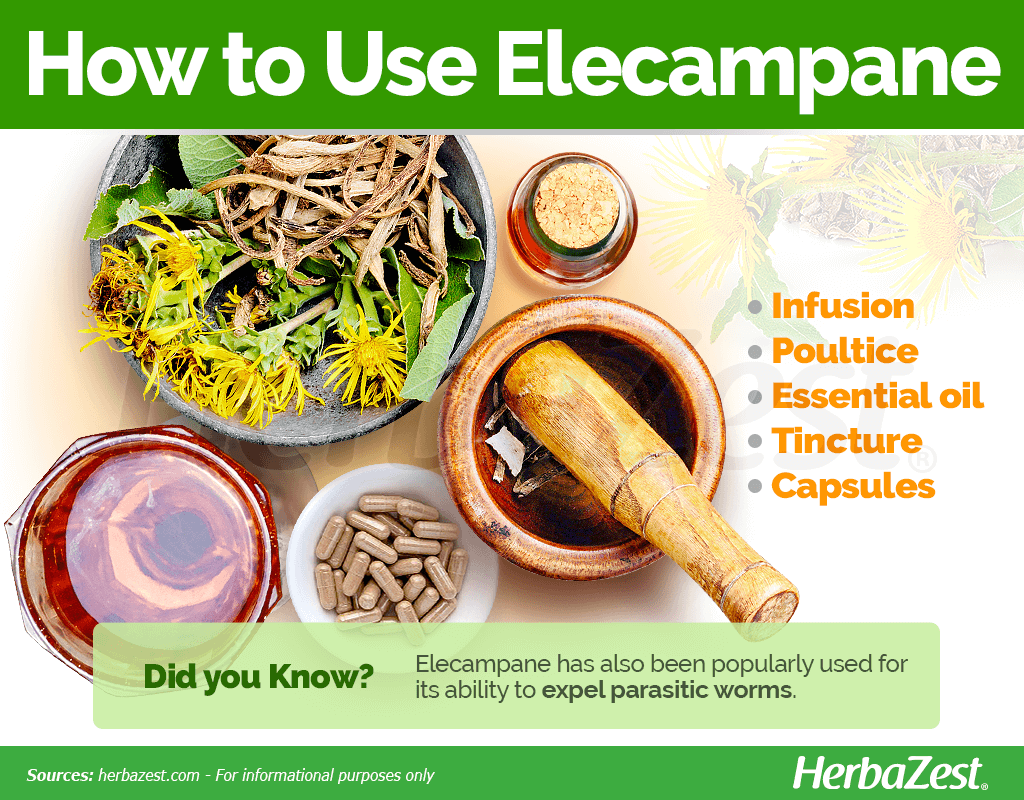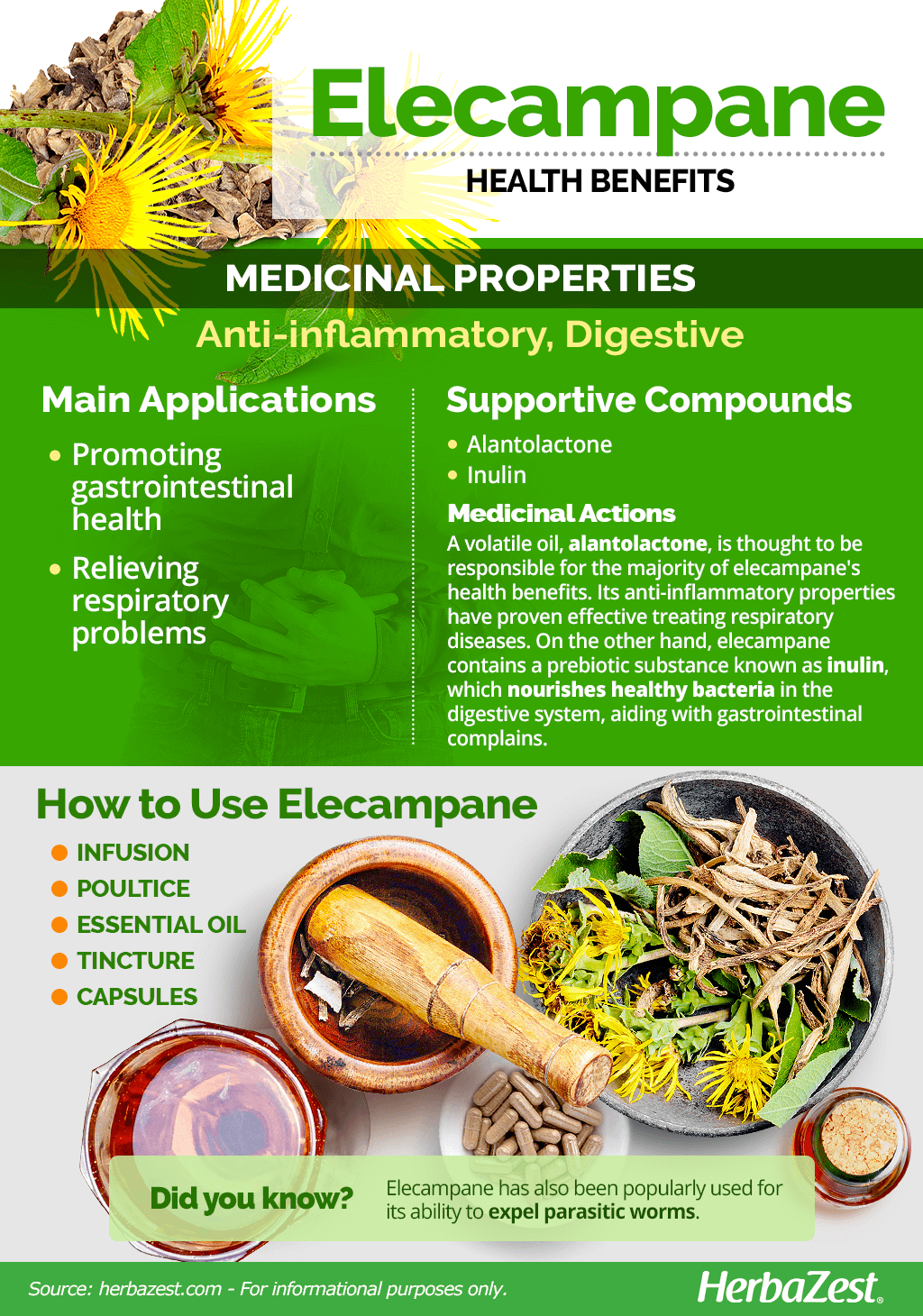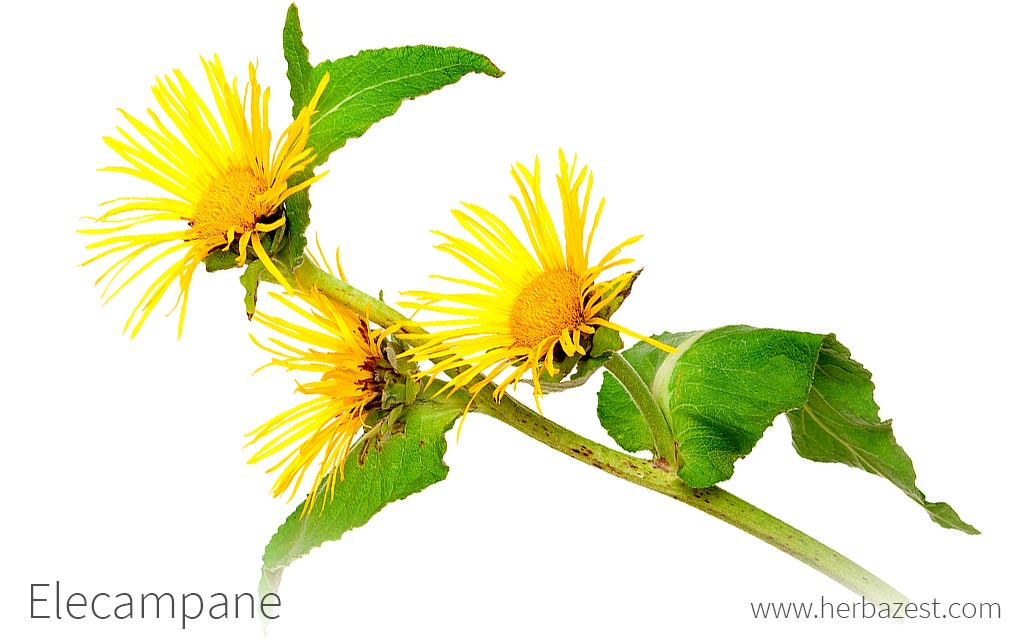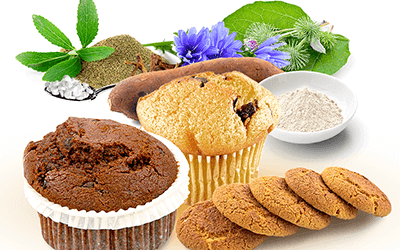Native to southeastern Europe and western Asia, elecampane is now naturalized in many places across the globe and regarded by most as a common weed. The plant was once revered by the Ancient Greeks and Romans, and used to treat a wide variety of illnesses, such as indigestion, "melancholy," and bronchitis. In modern herbal medicine circles, it retains its use as a bronchial soother.
Elecampane Medicinal Properties
Health Benefits of Elecampane
The popularity of elecampane in ancient remedies has led to a moderate interest in the plant today. Although evidence is scarce, thanks to modern scientific research it is known that elecampane contains some beneficial compounds, and herbalists claim it may be useful mainly for:
Supporting healthy digestive system. Elecampane encourages healthy bacteria in the gut, thus improving digestion.
Relieving respiratory problems. Treating shortness of breath, cough, and chest pain, among other respiratory complaints is one of the oldest uses of elecampane.
Additionally, elecampane has also been popularly used for its ability to expel parasitic worms.
How it Works
The roots and rhizome of elecampane possess the highest content of active compounds. They contain volatile oils, mainly alantolactone, which is thought to be responsible for the majority of elecampane's health benefits, as it has anti-inflammatory, antibacterial, anthelmintic, and analgesic properties, however its mechanism of action is yet to be fully understood.1
The plant also contains a substance known as inulin, which is a prebiotic that can not be absorbed by the human body, but nourishes healthy bacteria in the digestive system, aiding with gastrointestinal complains.2,3
The antimicrobial and anti-inflammatory properties of elecampane have proven effective for treating respiratory diseases.4
Digestive properties are also present in herbs like bay laurel, chicory, dandelion, and oregano, whereas eucalyptus, lobelia and myrtle provide relief for respiratory complains.
Elecampane Side Effects
Elecampane is considered largely safe to use; however, if administered in large doses it can cause some side effects. The plant contains up to 44% inulin which, as mentioned above, is not digestible and can ferment in the gastrointestinal tract, causing bloating and flatulence in sensitive people.
Overconsumption of the herb can also cause vomiting and diarrhea.
Elecampane Cautions
The herb is not known to interact with other medication. However, those who suffer from serious conditions, as well as pregnant and breastfeeding women, should always seek advice from a doctor before introducing an herbal supplement to their diet.
- Medicinal action Anti-inflammatory, Digestive
- Key constituents Alantolactone, inulin
- Ways to use Capsules, Hot infusions/tisanes, Tincture, Poultice, Essential oil
- Medicinal rating (1) Very minor uses
- Safety ranking Safety undetermined

How to Consume Elecampane
Elecampane in no longer widely valued for its medicinal properties, mainly because of the existence of modern remedies - both natural and synthetic - which can treat health conditions more efficiently. Having said this, some herbalists still recommend elecampane for a few complaints, and it is available as a supplement as well as in its raw form.
Elecampane is not generally used in cooking today, but there is evidence to suggest that the leaves were historically used as a potherb in some ancient Roman dishes. The roots were also traditionally used, being candied and eaten as a sweetmeat.
Natural Forms
Infusion. Elecampane root can be brewed into a hot tisane, although this is not a popular form, as the elecampane flavor is quite bitter and unpleasant. Elecampane tea is drunk primarily to reduce coughing and stimulate digestion.
Poultice. The components of the plant can be crushed and applied topically, as a poultice or wash, to relieve inflamed skin and itches.
Herbal Remedies & Supplements
Essential oil. Can be used as a diffuser, or added to boiling water which will emit aninfused steam. When breathed in, these can soothe coughs and clear the respiratory tract.
Tincture. This concentrated preparation can be made at home or bought from herbalist retailers. It should be diluted according to the recipe or instructions supplied. This is often the preferred form for getting rid of intestinal worms.
Capsules. These are often the preferred form of consumption, as they allow the user fast intake of the herb's medicinal properties. They also make it easy to ensure a consistent dosage is being administered.
- Edible uses Flavoring
- Taste Bitter

Growing
Elecampane is known to grow all over the world. It is usually thought of as a hardy, invasive weed which can survive a range of conditions. It will thrive best however, if the following guidelines are taken into consideration:
Growing Guidelines
Soil should ideally be rich and well-drained
Plants prefer a position in full sun or partial shade
If unprotected from wind, some support may be required
Seeds should be planted in the spring
Seeds require light to germinate and so should be sown close to the surface
Plants should stand around 12 feet (3.6 m) apart
They require regular irrigation
- Life cycle Perennial
- Harvested parts Roots
- Growing habitat Temperate climates
- USDA Plant Hardiness Zones 3a, 3b, 4a, 4b, 5a, 5b, 6a, 6b, 7a, 7b
- Planting time Spring
Additional Information
Plant Biology
Elecampane (Inula helenium) is a perennial plant which can reach heights of six feet (2 m) tall. Its fibrous, top-shaped root stock has a brown exterior and a white interior. From the stout, round stem develops large yellow flower heads that can grow either solitarily or in clusters. The leaves are usually covered with sparse hairs on the top-side while the underside boasts a dense growth. The elecampane seed is encased in a small brown fruit that does not open to release it.
Classification
Elecampane belongs to the genus Inula, which is part of the large Asteraceae, or sunflower family, along with 1,620 genera and 23,000 species, notably including artichoke (Cynara cardunculus), burdock (Arctium lappa), calendula (Calendula officinalis), chicory (Cichorium intybus), chamomile (Matricaria chamomilla), echinacea (Echinacea purpurea), milk thistle (Silybum marianum), stevia (Stevia rebaudiana), and sunflower (Helianthus annuus).
Related Species
Elecampane has not known varieties or subspecies; however, the genus Inula comprises four accepted species: I. helenium (elecampane), I. britannica (British yellowhead), I. hookeri (hooker inula), and I. salicina (Irish fleabane), all of which are very similar in physical features, and therefore easy to confuse.
Historical Information
The species name helenium can be traced back to Greek mythology. It was named after Helen of Troy, who is believed to have carried elecampane flowers with her when she was abducted from Sparta. Legend has it that the herb would grow wherever her tears fell.
The plant continued to be a prized natural healer in the opinions of medical scholars throughout history, and noted Roman thinker Pliny (CE 23-79), is known to have had great faith in the potential of the herb, advising: "let no day pass without eating some of the roots to help digestion, and to expel melancholy."
Economic Data
Mostly due to the fact that elecampane is considered a weed, no market has grown around the plant. Elecampane products or exports are practically unheard of. Aside from elecampane seeds and supplements that can be bought, the economic importance of elecampane is virtually nil.
Popular Beliefs
It was once thought that elecampane could be used as a whitener for teeth, and a few different preparations were developed for this use in Medieval Europe.
Other Uses
Industry. The compound inulin can be extracted from the plant, and converted into a sweetener which is suitable for diabetics. It is marketed as a low calorie substitute for sugar.
Sources
- British Broadcasting Corporation, Medieval teeth 'better than Baldrick's'
- Go Botany, Inula helenium
- National Library of Medicine, Historical review of medicinal plants’ usage
- Plants For A Future, Inula helenium
- The Evergreen State College, Elecampane
- The Royal Horticultural Society, Inula helenium
- University of Michigan Health, Elecampane
- USDA Plants Database, Inula helenium L. elecampane inula
- Encyclopedia of Herbal Medicine, p. 109
- The Herb Book, pp. 176-177
- Rosemary Gladstar's Herbal Recipes for Vibrant Health
- New York University - Langone Medical Center, Elecampane
Footnotes
- Molecules. (2022). From Monographs to Chromatograms: The Antimicrobial Potential of Inula helenium L. (Elecampane) Naturalised in Ireland. Retrieved December 5, 2023, from: https://www.ncbi.nlm.nih.gov/pmc/articles/PMC8874828/
- Experimental and Therapeutic Medicine. (2020). Effect of inulin in the treatment of irritable bowel syndrome with constipation (Review). Retrieved December 5, 2023, from: https://www.ncbi.nlm.nih.gov/pmc/articles/PMC7579772/
- Molecules. (2022). Biological Activities and Chemical Profile of Gentiana asclepiadea and Inula helenium Ethanolic Extracts. Retrieved December 5, 2023, from:https://www.ncbi.nlm.nih.gov/pmc/articles/PMC9182457/
- Journal of Ethnopharmacology. (2020). Inula helenium and Grindelia squarrosa as a source of compounds with anti-inflammatory activity in human neutrophils and cultured human respiratory epithelium. Retrieved December 5, 2023, from: https://pubmed.ncbi.nlm.nih.gov/31644941/






